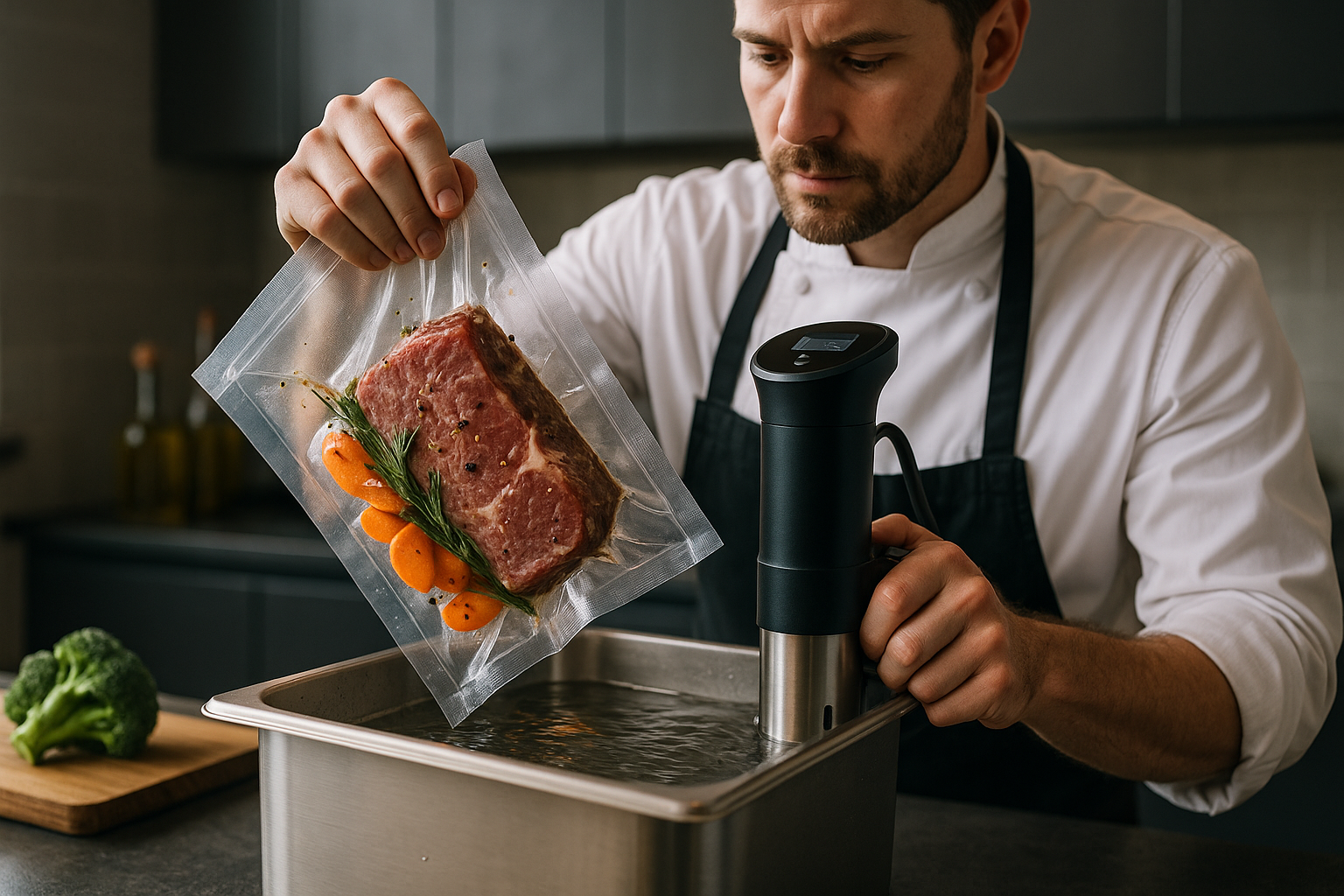A Dive into the Art of Sous Vide Cooking
Sous Vide is a cooking technique that has been gaining wide popularity amongst home cooks and professional chefs alike. This method involves immersing vacuum-sealed food in a water bath at a controlled temperature, resulting in precise and impeccable results. Let's delve deep into this exciting culinary innovation.

The Roots of Sous Vide
In the culinary world, innovation often sprouts from necessity. Sous Vide, which translates to “under vacuum” in French, was born in the mid-1970s, courtesy of French chef Georges Pralus. He invented this technique to prevent the loss of foie gras’s fat during cooking. The method was quickly adopted by other chefs for its precision and consistency.
The Science Behind Sous Vide
Sous Vide’s brilliance lies in its scientific premise. The method utilizes the principles of heat transfer and the unique properties of vacuum-sealed food. When the food is placed in a water bath at a specific temperature, it cooks evenly and retains its juices, achieving a consistency that’s hard to replicate through traditional methods.
Sous Vide in Modern Kitchens
From the hallowed kitchens of Michelin-starred restaurants to the cozy corners of home cooks, Sous Vide has found its way into modern culinary practices. The advent of affordable and user-friendly Sous Vide machines has made this French cooking technique accessible to all.
Exploring Sous Vide Recipes
While Sous Vide is famed for cooking meats to perfection, its application extends beyond that. Vegetables, eggs, and even desserts can benefit from this method. Sous Vide carrots, for instance, retain their earthy flavor and acquire a perfectly tender texture. On the other hand, Sous Vide cheesecake promises a silky-smooth consistency every time.
The Pros and Cons of Sous Vide
While Sous Vide offers precision and consistency, it also requires patience. The cooking process can take hours, even days, but the results are often worth the wait. On the downside, Sous Vide meat doesn’t get the characteristic sear without an additional step, and the equipment can take up significant kitchen space.
Interesting Sous Vide Facts
-
Sous Vide can make tough cuts of meat tender.
-
Sous Vide cooking can reduce food shrinkage.
-
Even brewery industries use Sous Vide for certain processes.
As we conclude our culinary journey into Sous Vide cooking, it’s clear that this technique offers a unique way to explore food. Its scientific approach, precision, and versatility make it a valuable tool in modern gastronomy. So, the next time you’re looking to try something new in the kitchen, why not consider diving into Sous Vide cooking?




